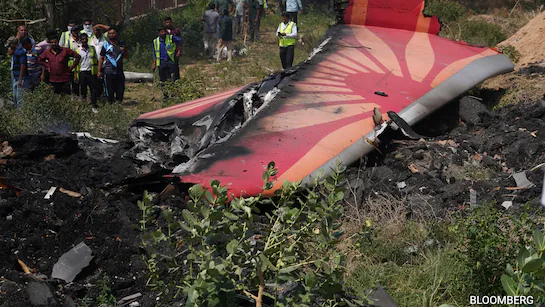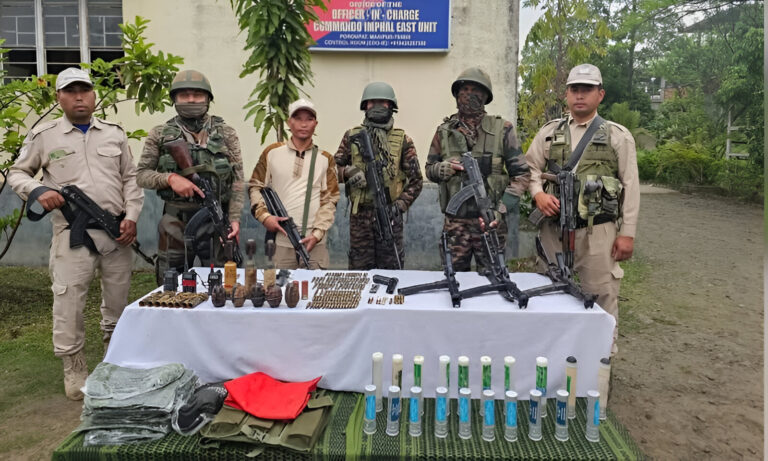Both Engines Shut Down Within Seconds of Take-Off: Key Findings from the Air India Crash Probe Report
Summary of the News Article
On June 12, 2025, an Air India Boeing 787-8 Dreamliner took off from Ahmedabad airport bound for London and tragically plunged seconds later, resulting in the deaths of 260 people—241 on board and 19 on the ground. India’s Aircraft Accident Investigation Bureau (AAIB) has released a 15-page preliminary report revealing that both Engine 1 and Engine 2 fuel cutoff switches transitioned from RUN to CUTOFF within one second of each other at 180 knots IAS, starving the engines of fuel and causing a complete loss of thrust. The cockpit voice recorder captured one pilot asking, “Why did you cutoff?” to which the other replied, “I had not.” The Ram Air Turbine (RAT) deployed automatically, but the aircraft couldn’t regain altitude and crashed before crossing the perimeter wall. No bird strike evidence was found, and investigators have quarantined key components for further examination
In-Depth Analysis
A Brief History of Flight AI 171
Have you ever wondered what goes into every takeoff? Flight AI 171 was operated by an 11-year-old Boeing 787-8 Dreamliner, registration VT-ANB, carrying 230 passengers and 12 crew. Captain Sumeet Sabharwal, with 15,600 flight hours (8,600 on the Dreamliner), and First Officer Clive Kunder, with 3,400 hours (1,100 on type), oversaw the flight. The Dreamliner, known for its fuel efficiency and passenger comfort, last underwent a routine maintenance check just weeks before the incident—making this accident all the more shocking
The Critical Seconds After Take-Off
Imagine lifting off and, almost instantly, both engines start to sputter. That’s exactly what happened around 08:08:42 UTC: the aircraft reached 180 knots indicated airspeed (IAS) and then suffered a sudden loss of both engines. The AAIB report shows that within one second, both the Engine 1 and Engine 2 fuel cutoff switches moved from RUN to CUTOFF, cutting off fuel supply simultaneously and causing the N1 and N2 speeds to plunge. It’s akin to hitting the brakes at full speed—only at 7,000 feet, it’s impossible to stop without a safe runway.
Fuel Control Switches: The Tiny Levers with a Huge Job
Fuel cutoff switches are small toggles in the cockpit that control fuel flow to each engine. Pilots use them primarily on the ground to shut down engines during maintenance or emergencies. But mid-air? That’s unheard of. U.S. aviation safety expert Anthony Brickhouse told Reuters that a pilot “would not be able to accidentally move the fuel switches,” raising fundamental questions about how and why both were flipped in the critical seconds after liftoff
Cockpit Voice Recorder: Voices in the Dark
In aviation investigations, the cockpit voice recorder (CVR) is like a forensic diary. Here, it captured one pilot’s stunned question—“Why did you cutoff?”—and the other’s denial, “I had not.” This brief exchange suggests confusion or miscommunication rather than a deliberate act. It’s possible one lever toggled the other, but with no clear smokescreen of sabotage and no immediate mechanical faults identified, the investigation remains open on that point
Ram Air Turbine Deployment: A Last-Resort Lifeline
When both engines lost thrust, the Boeing 787 automatically deployed its Ram Air Turbine (RAT) to provide emergency hydraulic and electrical power. Think of the RAT as a wind-driven generator: a small turbine that pops out into the airstream—like a backup flashlight when your phone dies. The RAT deployment confirmed total power loss and gave pilots minimal control—enough to make a mayday call but not enough to gain altitude before impact
Rules Out Bird Strike and Other Causes
Bird strikes are often the first suspect in engine failures, but this probe found no significant bird activity near the flight path. CCTV footage showed a clean climb, and wreckage analysis ruled out external damage. By eliminating possible culprits—fuel contamination, bird ingestion, maintenance oversight—the investigation narrows to the human-machine interface: those tiny fuel cutoff switches
Wreckage Recovery and Component Quarantine
Post-crash operations were meticulous. Drones captured the crash site, then investigators moved the debris to a secure hangar. Both engines were quarantined, along with cockpit components. The aft Extended Airframe Flight Recorder (EAFR), however, sustained heavy damage and required specialized access methods. Quarantining parts ensures that any material evidence can be scrutinized for anomalies—wiring defects, hydraulic leaks, or non-conforming parts
No Immediate Safety Recommendations: Why?
You might ask: why hasn’t the AAIB called for design or operational changes yet? The preliminary report states there are no immediate recommendations for Boeing 787-8 or GE GEnx-1B engine operators. It’s rare but not unheard of; early reports focus on facts, not finger-pointing. As deeper analysis unfolds—examining torque data, switch detents, human factors—the next report may include actionable steps to prevent recurrence
The Human Cost: Beyond Numbers
Amid technical jargon lie real lives. Families in Ahmedabad, London, and beyond are grieving. First responders described scenes of devastation—charred wreckage, personal belongings scattered. The sole survivor, 40-year-old Vishwash Kumar Ramesh, escaped through a fuselage breach, a living testament to the fragility of events unfolding in just 32 seconds. When we read statistics—260 lives lost—we should remember each number had dreams, plans, and loved ones
Lessons for Airlines and Regulators
Every crash reshapes aviation safety protocols. Airlines may now revise cockpit switch guard procedures, while regulators could mandate switch-position sensors feeding into flight data monitoring systems. Simulator training might add scenarios where control levers are inadvertently moved. It’s a classic ‘Swiss cheese model’: every layer of defense must align to prevent holes from lining up, and this event shows one hole can lead to tragedy if unchecked.
An Analogy: When the Lights Go Out
Picture a power outage in your home: lights flicker, devices shut down. Now imagine that happening at 7,000 feet with 242 souls aboard. Just as a blackout forces you to scramble for flashlights, the RAT emergency system gave pilots minimal power—but not enough runway. It’s a stark reminder that in complex systems, small missteps—or mysterious toggles—can cascade into catastrophe.
What’s Next in the Investigation
The AAIB, with international experts on standby, will delve into cockpit ergonomics, switch design, and crew decision-making processes. They’ll reconstruct the flight in simulators, analyze human-machine interfaces, and perhaps uncover why both switches moved within that fateful second. Expect a final report in 12–18 months, complete with safety recommendations for Boeing, GE, and airlines worldwide.
Bringing It All Together
This tragic incident underscores how aviation safety is a tapestry of engineering, training, and human factors. A single toggle—just one second—changed the course of history for 260 people. As investigations continue, we anticipate lessons learned will make our skies safer. Until then, we mourn the lives lost and salute the investigators piecing together every clue.
FAQs
- What exactly caused both engines to shut down?
Preliminary findings indicate both fuel cutoff switches moved from RUN to CUTOFF within one second, cutting off fuel supply and causing loss of thrust - Why haven’t there been immediate safety recommendations?
The AAIB’s early report focuses on factual findings; detailed human factors and design analyses come later, guiding final recommendations - Could a technical glitch have moved the switches?
Investigators are examining mechanical detents and ergonomics, but experts doubt accidental shift without pilot input; the cause remains under study - What role did the Ram Air Turbine play?
The RAT deployed automatically to provide hydraulic and electrical power after total engine failure, giving pilots limited control to issue a mayday call - How soon will we know the final cause?
Final AAIB reports typically take 12–18 months, incorporating extensive lab tests, simulator reconstructions, and expert reviews before issuing safety directives.





